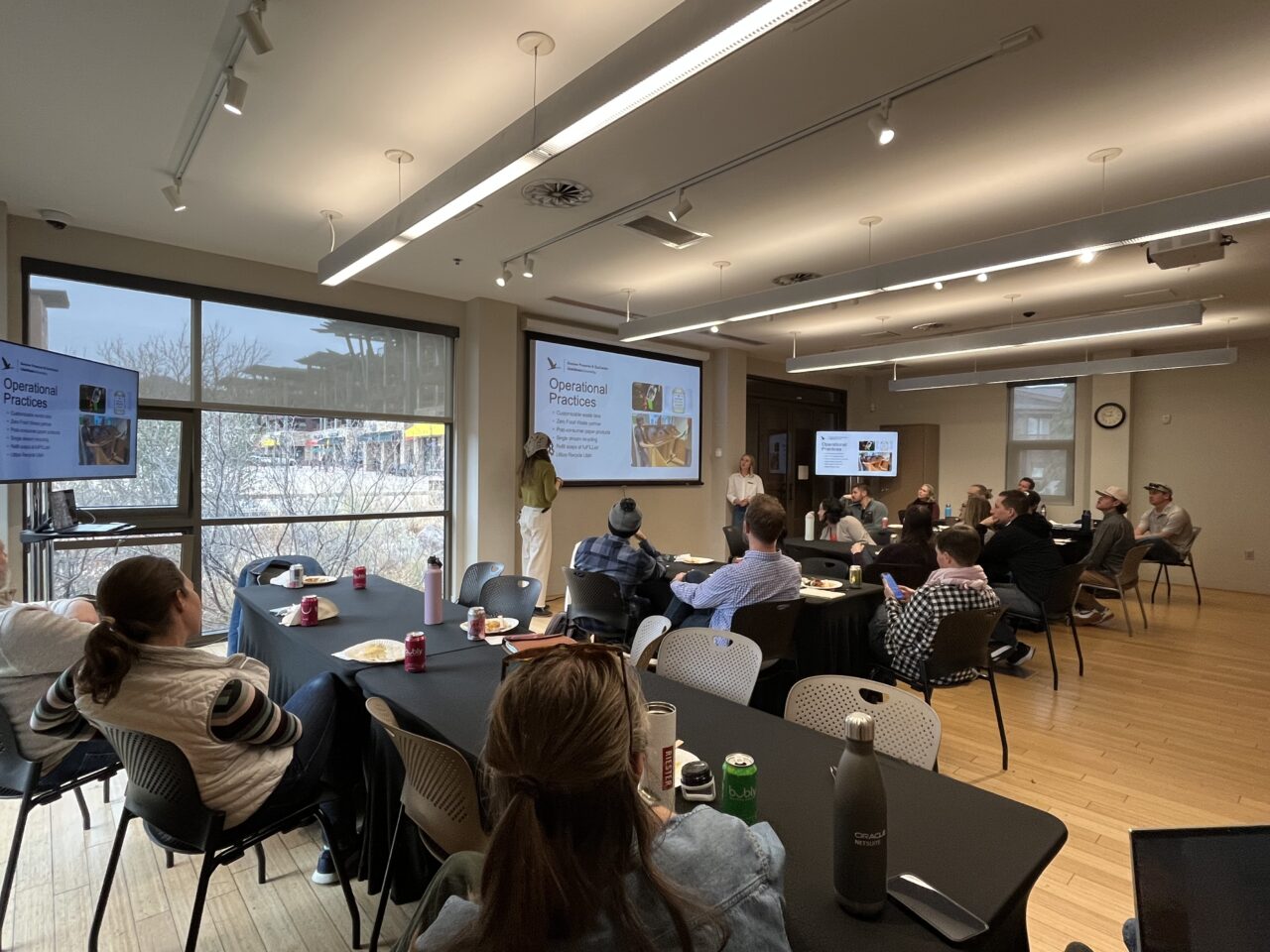Lunch and Learn Recap – Sustainable Purchasing in Action
November 17, 2025


What is sustainable procurement and why does it matter?
It is estimated that purchasing accounts for more than 50% of a business’s carbon emissions, from the energy and resources required to make, transport, and dispose of products. Understanding the purchasing power of your business is essential to reducing your organization’s impact and driving meaningful sustainable change.
The November Lunch and Learn explored this topic and highlighted how businesses can take a more active approach to purchasing.
We were joined by Windy Aphayrath, Chief Procurement Officer for the State of Utah, and Michelle Brown, Coordinator for Resource Stewardship for the Utah Department of Government Operations, who discussed sustainable procurement practices. The Swaner EcoCenter team also shared how they approach sustainability when selecting products for their gift shop.
Key takeaways from Windy and Michelle for businesses looking to improve the sustainability of their purchasing strategies include:
- Evaluate metrics and data you already have access to: Platforms such as Amazon now offer sustainability-related insights on your orders to help you better understand the environmental impact of what you buy. Under Amazon’s Programs & Features, you can also search for Climate Pledge Friendly products (look for the green leaf symbol indicating product sustainability features)
- Use third-party certifications to guide purchasing decisions: To avoid greenwashing, rely on reputable third-party certifications that align with your sustainability goals. For greater assurance, look for multi-attribute certifications. Learn more about third-party certifications here
- Ask for help: Whether internally across divisions or within the community, seek partners who can support your sustainable procurement journey through knowledge sharing and resources. The Green Business Team is also available to help!
Consider these guiding questions used by the Swaner EcoCenter to select vendors and products for their gift shop:
- What vendors and products are available locally?
- What products promote sustainable behavior (e.g., rechargeable batteries, reusable bags)?
- Is there a product that can educate customers about nature, community, or sustainability topics relevant to your industry?
Here are some ways you can challenge your staff to put these tips into practice:
- After reviewing your purchasing history, you discover that you currently purchase 5 products from local vendors. Can your business set a goal to double that within a year?
- In speaking with your staff, you learn that paper products are the most commonly purchased item in the office. Can your business set a goal to phase in 30%, then 100% recycled-content paper products?
- When cleaning up after every board meeting, you notice that there are always plastic water bottles left to recycle. Can your staff pilot water pitchers and reusable cups for next time?
Check out the event slides for more information on the topics covered.
Stay tuned for more information on our February Lunch and Learn!